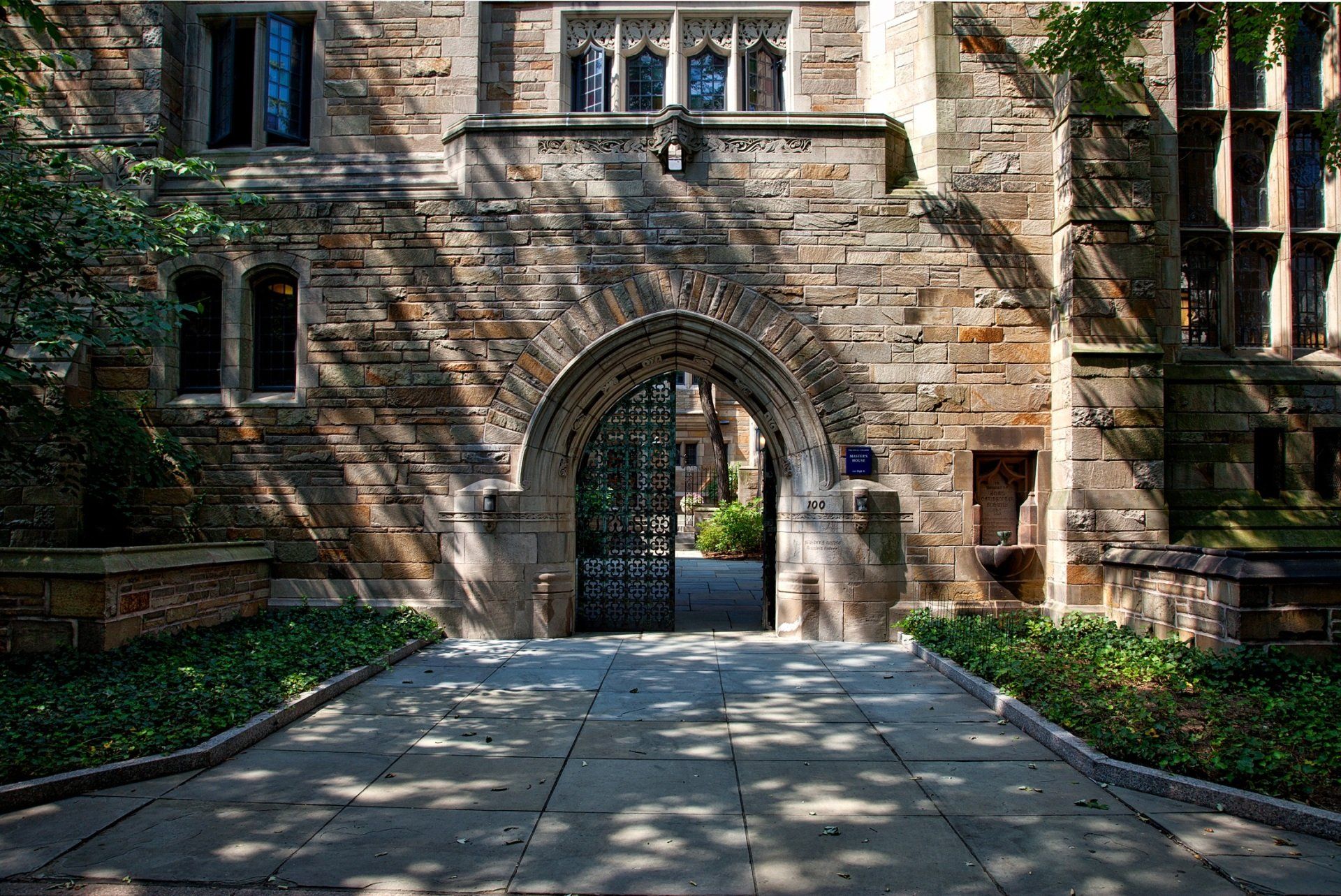Explore the Top 50 Universities with BosonEd II
In the previous article, we went over colleges in Massachusetts. In this article, let's take a look at Connecticut and New York. We will go over ale, Wesleyan, Columbia, Cornell, Barnard, NYU, and Rochester. This article will showcase their first year and transfer admission data, student body, academics, tuition and fees, and overlap schools.
Yale University
Yale University's campus size ranks second among the big Ivies (Harvard, Yale and Princeton). It's larger than Princeton but smaller than Harvard. Located in New Haven, Connecticut, Yale has a graduation requirement of 36 courses, equivalent to 9 courses per year. This is more than the typical university requirement of 32 courses, so students experience relatively high academic pressure. Yale consists of 12 colleges and 1 graduate school, but its most renowned aspect is its exceptional emphasis on undergraduate education. Yale College, the undergraduate arts and science college, is the core of Yale. All professors at Yale are required to teach undergraduate courses, which means your introductory macroeconomics class might be taught by a Nobel laureate in economics. Additionally, undergraduate students have the opportunity to engage in research in laboratories. Yale has a total undergraduate enrollment of 9,275 students, with a gender ratio of 48/52 and an international student population of 10%.
Yale's strong majors include architecture, arts, drama, music, economics, English, engineering, and biology. Unlike other elite universities, Yale does not have a core curriculum, meaning there are no specific courses required for graduation. Many consider Yale's campus culture to be more conservative compared to Harvard and Princeton, but in reality, Yale leans more towards liberalism than both Harvard and Princeton.
Regarding costs and scholarships, Yale's annual cost is $82,170 USD. It’s 100% need based for domestic students and 88% of international students receive financial aid, with an average award of $70,728 USD. Families with an annual income below $75,000 USD do not need to pay any fees. Additionally, these students receive a $2,000 USD grant in their first year.
Many people are concerned about the safety of New Haven. Within Yale's campus, safety is not a problem, as Yale has its own police department.
Overlap Schools: Harvard, Princeton, Stanford, Columbia, Duke, MIT, University of Pennsylvania, Brown. (Basically all other Ivies and top colleges)
Wesleyan University
Many people compare it to Amherst or Williams, but Wesleyan is more akin to Swarthmore. The main difference is that Wesleyan is about twice the size. Situated in central Connecticut, it's a 2-hour drive from both New York and Boston. The campus hosts 3,364 students with a gender ratio of 44% male to 56% female. Despite being a liberal arts college, Wesleyan describes itself as a "liberal arts college with research university resources".
Strengths at Wesleyan University lie in the fields of Economics, Psychology, Government, English, Neuroscience and Behavior, Music, Astronomy, Molecular Biology and Biochemistry, and East Asian Studies. One of the hallmarks of liberal arts colleges is their small class sizes, and at Wesleyan, 73% of courses have fewer than 20 students.
Regarding costs and scholarships, Wesleyan's total cost is $82,245 USD. 27% of international students receive financial aid, with an average award of $75,536 USD.
Overlap Schools: Brown, Yale, Tufts, Cornell, Williams, Vassar, Swarthmore, Haverford.
Columbia University
Columbia University is currently the most popular Ivy League college among students. In the past decade, the number of applicants has doubled. The primary reason for this is its location. Manhattan prevails any other Ivy, even compared to Harvard in Boston.
Columbia has a total enrollment of 27,457 students, with 6,696 undergraduates. The gender ratio is 49% male to 51% female. In the most recent statistics, there were 60,551 applicants, resulting in an acceptance rate of 4%, which is now lower than Yale's. Columbia undergraduates are required to take the renowned Core Curriculum, which constitutes one-third of their course load in the first two years. Despite the rigorous nature of these courses, most students find them highly valuable. Additionally, the Core Curriculum provides an opportunity for students from different majors to get to know each other and become friends.
Columbia's strengths lie in the fields of Engineering, English, History, Political Science, Economics, Neuroscience, Computer Science, and Chemistry. The coursework at Columbia is known to be very demanding, and the university is often rated as one of the schools with the highest academic pressure.
Overlap Schools: Harvard, Yale, Stanford, MIT, Princeton, University of Pennsylvania (Penn), Brown, University of California, Berkeley.
Cornell University
Cornell University is known for two main characteristics: being the easiest Ivy League school to get into and being the most rural Ivy League school. However, Ithaca, where Cornell is located, is a picturesque college town.
The total student population at Cornell is 25,008, with 15,450 undergraduates. In the most recent statistics, there were 67,380 undergraduate applicants. Cornell always stands out among Ivy League schools, as can be seen from its unique college structure, which sets it apart from the other Ivies. Competition among students at Cornell is highly intense, and after several student suicides were publicized in 2009, the university strengthened its mental health counseling programs. Cornell's College of Engineering offers a co-op program, allowing students to intern at various companies during their semesters.
One interesting characteristic of Cornell students is that most of them did not receive acceptances from other Ivy League schools. Students who apply to other Ivy League schools sometimes find themselves holding multiple offers.
The total cost of attending Cornell University is $80,278 USD. Among international students, 13% receive financial aid, with an average award of $69,338 USD.
Overlap Schools: Harvard, University of Pennsylvania (Penn), Stanford, Dartmouth.
Barnard College
Barnard College is one of the most renowned women's colleges in the United States. It is located across from Columbia University. Established in 1889, at a time when Columbia University did not admit female students, American writer Annie Nathan Meyer founded a women's college to counter this unfair treatment. She even used the last name of Columbia's former president, which carries a touch of irony.
Barnard's core curriculum, known as the Foundation Curriculum, aims to cultivate students' general knowledge accumulation, critical thinking, and communication skills. Freshmen are required to take a writing course, a discussion seminar, and a physical education course. They also need to fulfill the requirements in six areas of thinking modes, such as technological thinking, local thinking, and global thinking.
Barnard excels in programs such as Architecture, Computer Science, Visual and Performing Arts, English, Women's Studies, Economics, Psychology, and History.
The total cost of attending Barnard College is $80,693 USD. Among international students, 9% receive financial aid, with an average award of $70,735 USD.
New York University
Similar to Columbia University, New York University (NYU) is located in Manhattan, New York. While Columbia is situated on the Upper West Side, NYU's main campus is in Greenwich Village. Additionally, NYU has an engineering school located in Brooklyn.
Regarding NYU's campus environment, opinions vary. Some people like it, while others may not. This is mainly because, apart from the area around Washington Square Park, NYU doesn't have a traditional enclosed campus. Instead, its campus is integrated into the fabric of Manhattan. However, NYU's location is incredibly advantageous, and some may argue that it is even better than Columbia's. The surrounding neighborhoods include SoHo, Chinatown, and Little Italy, with a plethora of shops and restaurants. Food enthusiasts would undoubtedly love NYU.
The total student population at NYU is 49,397, with 27,645 undergraduates. NYU also has a core curriculum, with freshmen and sophomores required to take courses including foreign languages, writing, contemporary culture, and basic science.
NYU's standout programs include Film and Television, Visual Arts, Business, Economics, Journalism, Political Science, and Nursing. The university's prime location makes it easy for students to find internships.
The total cost of attending NYU is $70,746 USD.
Overlap Schools: University of Southern California (USC), Cornell University, Boston University, Northeastern University, University of California, Berkeley, Carnegie Mellon University, Columbia University.
University of Rochester
Located in upstate New York, the University of Rochester is known for its impressive amount of snow during the cold winter months. The total student population at Rochester is 10,139, with 6,238 undergraduates. The university does not have general education course requirements, but students are required to take courses in three out of six designated disciplinary areas.
Notable strengths at Rochester include Music, Engineering (Rochester is the headquarters for Kodak, Xerox, and Bausch & Lomb), and 80% of classes have fewer than 20 students.
The total cost of attending the University of Rochester is $79,456 USD.
Overlap Schools: Cornell University, New York University (NYU), Tufts University, Carnegie Mellon University, Boston University, Case Western Reserve University, Johns Hopkins University, Washington University in St. Louis.
















